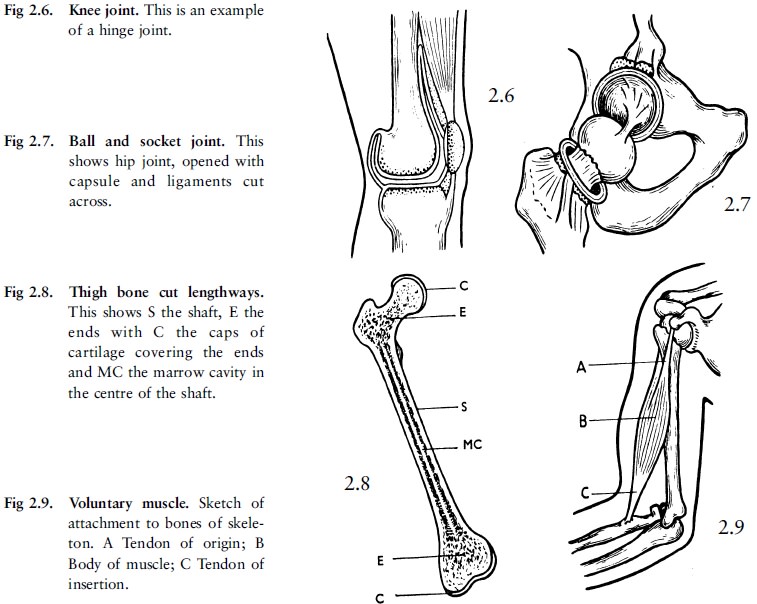Chapter: Forensic Medicine: Basic anatomy and physiology
The muscles
The muscles
Most of the bones of the limbs are of the same
general shape - they
are long bones. In body movements they play the part of levers which are set in
motion by the action of the muscles. The muscles form the mass of red flesh of
the body, and they are the active agents in producing movement. Together they
make up nearly one half of the total body mass.
A typical voluntary muscle, that is a muscle
attached to a bone of the skeleton and also known as a skeletal or striped
muscle because of microscopic stripes in its structure, has the following
structure (fig 2.9):
·
It has a fleshy belly or body which is the active portion of the muscle.
This consists of a large number of bundles of minute fleshy fibres which are
arranged in the line of action or pull of the muscle. When acted upon by the
nerves, these fibres contract. With contraction each fibre shortens and at the
same time broadens, so that the mass of the muscle as a whole also shortens
along its line of action, and at the same time broadens. A thin fibrous sheath
encloses and supports the body of the muscle.
·
At either end the muscle is attached to a bone, sometimes by a direct
attachment of muscle fibres but more often by means of a tendon or sinew, a
strong fibrous cord which joins the fleshy part of the muscle to the bone. In
order to produce movement, each end of the muscle must be attached to a
different bone, and usually the tendon of the muscle passes over a joint.
The more fixed point to which a muscle is
attached, and from which it acts, is called its origin: the attachment to the
bone on which it acts is called its insertion.
When a muscle contracts, its two ends are
brought closer together and the bones to which these ends are attached are also
brought closer together. In this way movement is produced. This is clearly
shown in figure 2.9. The prominent muscle in the front of the upper arm (the
biceps muscle) is attached at the top to the shoulder blade. This is its
origin. Below, lower down its tendon passes across the elbow joint, and is
attached to (inserted into) the upper end of the radius. When this muscle contracts
(shortens), it draws the forearm upwards towards the upper arm, and bends the
arm at the elbow joint.

Most of the muscles of the body fall into one of
the following two main groups: those which bend or move a limb or other part of
the body at the joint (flexor muscles), and those which stretch or lengthen a
limb or other body part (extensor muscles).
When the muscles of the front of the upper arm,
for example, shorten or contract, they bend the arm at the elbow joint. Those
at the back of the upper arm straighten the arm at the elbow joint. Similarly,
some of the muscles of the front of the forearm bend the fingers upon the hand,
others bend the hand upon the forearm at the wrist joint. The muscles at the
back of the forearm have the opposite action.
Muscles are activated by impulses reaching them
through the nerves. The muscles which produce the general movements of the body
are under the control of the will and are therefore called voluntary muscles.
They are attached to and act upon the bones of the skeleton.
The involuntary muscles are those which form
part of many of the internal organs such as the heart, the stomach and the
intestines, and they are so called because for practical purposes their actions
are not controlled by the will, although they are influenced by the nervous
system. Involuntary muscles are not attached to the skeleton.
Related Topics